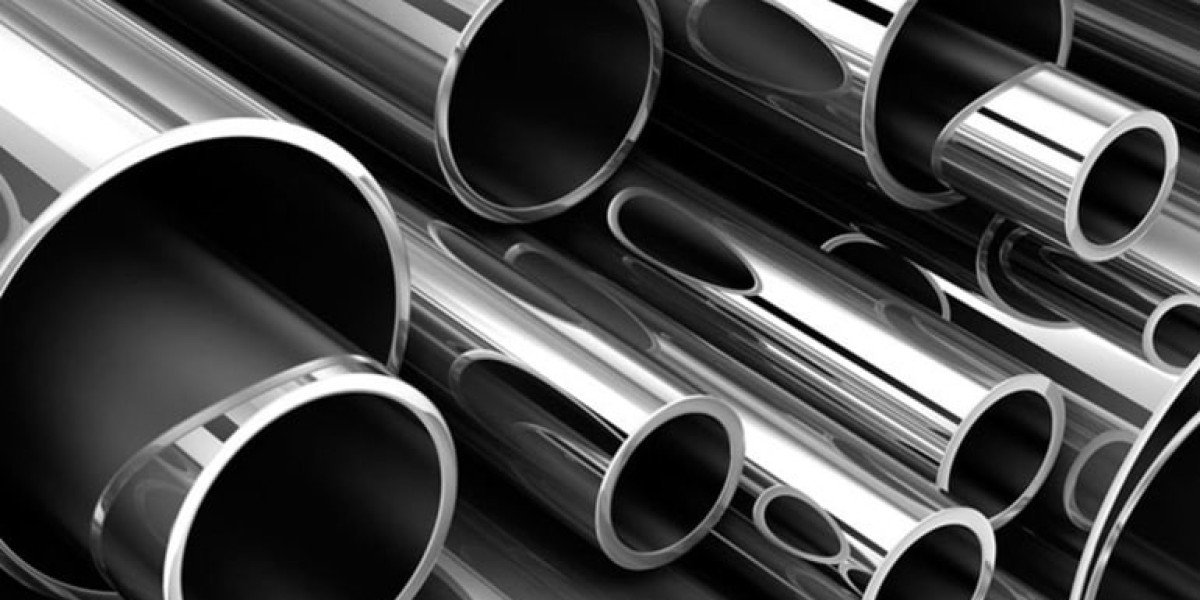Seamless pipes are the backbone of modern infrastructure. From oil rigs to power plants and construction sites, they are trusted for their unmatched strength and durability. What makes seamless pipes unique is their production method they are formed without any welding or joints, which makes them stronger than traditional welded pipes.
In this blog, we will explore what seamless pipes are, how they are made, their features, benefits, and why they are widely used in demanding industries.
Introduction to Seamless Pipes
A seamless pipe is a hollow tube manufactured from a solid billet of steel or alloy. The billet is pierced and rolled to form the pipe. Because there are no seams or welds, seamless pipes can withstand extreme conditions without the risk of leakage or breakage.
These pipes are ideal for industries where safety, precision, and strength are non-negotiable. Whether transporting oil, gas, steam, or chemicals, seamless pipes guarantee performance and reliability.
Characteristics of Seamless Pipes
Seamless pipes are known for the following characteristics:
High Mechanical Strength – Can handle heavy loads and high pressure.
Uniform Surface Finish – Smooth inner surface ensures better fluid flow.
Corrosion Resistance – Different grades resist rust, chemicals, and seawater.
Dimensional Accuracy – Manufactured with precise diameter and thickness.
Wide Range of Sizes – Available in multiple diameters and wall thicknesses.
Longer Service Life – Lasts longer compared to welded pipes.
Manufacturing Process of Seamless Pipes
The production of seamless pipes is more complex than welded pipes. Here’s a step-by-step look:
Billet Preparation – High-quality steel billets are cut to length.
Heating – Billets are heated until malleable.
Piercing – A piercing mandrel creates a hollow center in the billet.
Rolling – The hollow billet is rolled and stretched to required dimensions.
Heat Treatment – Pipes undergo treatments like annealing to enhance strength.
Testing – Non-destructive tests confirm safety and performance.
Cutting & Finishing – Pipes are cut to size, surface-treated, and polished.
This precise process ensures seamless pipes achieve the required mechanical and chemical properties for critical applications.
Types of Seamless Pipes
Seamless pipes are classified based on the material used in manufacturing:
1. Carbon Steel Seamless Pipes
Strong, affordable, and widely used in oil, gas, and power industries.
2. Stainless Steel Seamless Pipes
Excellent corrosion resistance, making them ideal for chemical and food industries.
3. Alloy Steel Seamless Pipes
Contain alloying elements like chromium, nickel, and molybdenum. Used in boilers, turbines, and refineries.
4. Duplex and Super Duplex Seamless Pipes
High resistance to stress corrosion cracking. Widely used in marine and offshore environments.
5. Nickel Alloy Seamless Pipes
Provide exceptional performance in extreme heat and corrosive atmospheres. Common in aerospace and chemical plants.
Standards for Seamless Pipes
To maintain global compatibility and safety, seamless pipes are manufactured under strict standards such as:
ASTM A106 – Carbon steel pipes for high-temperature service.
ASTM A312 – Stainless steel seamless pipes.
ASTM A335 – Alloy steel pipes for pressure and heat service.
API 5L – Line pipes for oil and gas industries.
EN / DIN / JIS – International and regional standards.
Advantages of Seamless Pipes
Superior Strength – No weld seam means no weak points.
Better Pressure Handling – Ideal for high-pressure systems.
Smooth Flow – Reduced friction loss during fluid transport.
Durability – Longer lifespan compared to welded pipes.
Wide Applications – Works across multiple industries.
Higher Reliability – Perfect for critical operations where safety matters.
Applications of Seamless Pipes
Seamless pipes are used in almost every industry that relies on durable piping solutions.
Oil & Gas – Drilling, exploration, and transport pipelines.
Power Generation – Boilers, heat exchangers, and turbines.
Petrochemicals – Transport of chemicals, gases, and liquids.
Construction – Structural applications in high-rise buildings and bridges.
Automobile Industry – Fuel injection systems, exhausts, and hydraulics.
Shipbuilding & Marine – Offshore drilling rigs and seawater pipelines.
Aerospace – Precision applications in aircraft and defense.
Seamless Pipes vs. Welded Pipes
| Aspect | Seamless Pipes | Welded Pipes |
|---|---|---|
| Strength | High, no seam | Moderate, weaker at welds |
| Pressure Handling | Excellent | Limited |
| Cost | Higher | Lower |
| Durability | Longer lifespan | Shorter lifespan |
| Applications | High-pressure & critical | General, low to medium duty |
Why Choose Seamless Pipes?
Seamless pipes are chosen when safety and reliability are non-negotiable. They may cost more initially, but their performance and durability make them a smart long-term investment. For industries handling volatile materials or operating in extreme conditions, seamless pipes offer the assurance of strength, precision, and efficiency.
Conclusion
Seamless pipes have revolutionized industrial piping systems with their unmatched strength, durability, and resistance to extreme conditions. Whether in oil exploration, chemical processing, power generation, or infrastructure projects, seamless pipes are trusted worldwide.
By investing in seamless pipes, industries gain efficiency, safety, and long-term reliability. Their versatility and superior performance make them one of the most vital components in modern engineering and construction.












